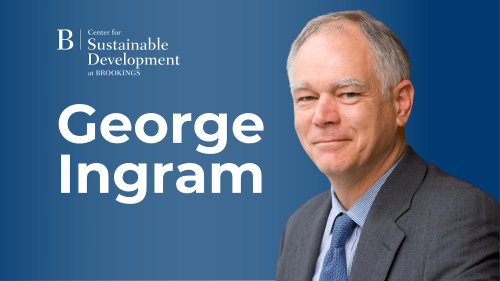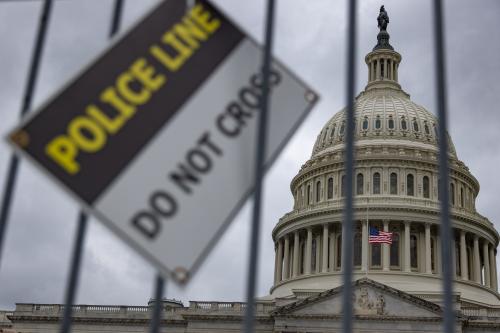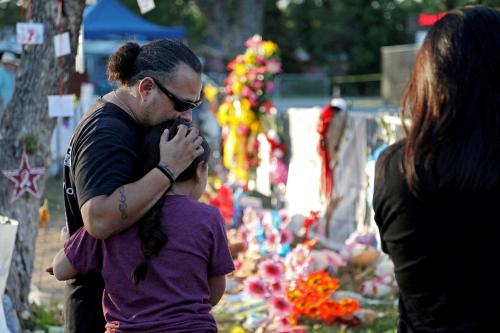Wednesday’s announcement by Colombian President Juan Manuel Santos and the leader of the leftist Revolutionary Armed Forces of Colombia (FARC), Timoleon “Timochenko” Jimenez, that an agreement was reached on one of the most contentious and difficult points in the peace negotiations is appropriately heralded as a key breakthrough. Not only did the two leaders shake hands on how to punish FARC members who committed human rights abuses and on compensating the victims, they also announced that a final deal would be worked out in six months. Moreover, the FARC has committed itself to laying down its weapons within 60 days of March 26, 2016, the deadline for signing the final document.
Upon the materialization of the agreement next spring, Colombia will have formally ended one of the longest running insurgencies and civil wars. It then has a chance to truly become a model of peace and social progress, if it succeeds in implementing the commitments to social justice embraced in the peace deal. The restructuring of Colombia’s political, social, and economic arrangements toward much greater social inclusiveness would address some of the long-standing root causes of violence in the country. But that road will be a far longer and more difficult one than hammering out the final deal.
Nailing the exact wording of the peace agreement
The actual implementation of the provisions on justice and punishment of FARC perpetrators of human rights violations will be controversial. FARC negotiators have long refused any prison sentences. Wednesday’s announcement states that fighters who confess their crimes, lay down their weapons, and compensate victims will receive no more than eight years of restrictions on their liberty. Unlike the paramilitary fighters who received a similar deal under the 2006 Peace and Justice Law, they might, however, not end up in a prison, but perhaps serve sentences in other facilities or under house arrest. The fighters who miss the deadline for confession will go to prison for up to 20 years. And the meaning of reparations to victims has yet to be specified and might vary considerably, entailing for example community work, helping to plant crop replacements for coca, or clearing landmines. A special tribunal and courts are to process the confessions, carry out investigations, and mete out punishments.
The possibility of very mild punishments and no time in jail might be begrudgingly welcomed by Colombia’s military, even if opposed by anti-deal political factions in the country led by former President Álvaro Uribe. Although many in the military still oppose a negotiated deal and define their purpose as killing as many FARC members as possible, many of the government’s soldiers and officers also fear prosecution for the major crimes they themselves committed in the course of the counterinsurgency, such as killing civilians and pretending their victims were FARC members. The justice process agreed upon with the FARC is also to apply to them.
In the remaining six months, the details of implementation of all the previously agreed points on rural development and land reform, ending the drug trade, and FARC’s political participation as well as the group’s disarmament, demobilization, and reintegration (DDR) are to be worked out. Many of the tough issues from the previous negotiating points have been bracketed and will now be reopened. DDR will be tough—many of remaining 8,000 or so FARC members have no skills or social experience other than fighting.
The FARC deal will not end the presence of armed actors in Colombia. Another leftist guerrilla force, the National Liberation Army (ELN), is yet to start robustly negotiating a peace deal with the government. It may continue fighting, hoping to take over the FARC’s former territories and illegal economic ventures. Since the 2006 demobilization of the paramilitaries, criminal bands and neoparamilitaries, such as the Urabeños, have sprung up in Colombia and number in the thousands. Like the former paras, they often not only usurp private land and resources, but also seek to control municipal governments. Will they target demobilized FARC members, run them out of town or assassinate them, and thus pull the plug on the peace process? Will the Colombian government be able to prevent them from doing so or, controversially, negotiate with them as well several years down the road? The Santos administration deserves credit for combatting these so-called bandas criminales, but they still remain a serious threat. Finally, the verdict is still out on whether the FARC leadership will be able to enforce the deal within its ranks and how many splinter factions will continue in criminal activities and violence.
Implementing the spirit of the peace agreement to address root causes of violence
Land reform, defined in the deal as “radical transformation of rural Colombia”, will require that the Colombian government and civil society tackle Colombia’s vested interests and succeed in transferring power to vast social sectors long excluded and marginalized. These requirements will face tough opposition. Earlier, on a smaller scale, the Colombian government, including during the Santos presidency, failed to accomplish the so-called “Consolidation Plan”—essentially the build phase of the counterinsurgency. Vested interests prevented devolution of meaningful resources to the neglected countryside, and line ministries, such as the Ministry of Agriculture, refused to comply. The Santos government, realizing that the consolidation was going nowhere, embraced negotiations.
Empowering the marginalized and decreasing the power and resources of vested interests will be equally critical for making alternative livelihoods work. Now that aerial spraying has been suspended by the Santos government, alternative livelihoods have been declared the core of its counternarcotics efforts, along with interdiction. That’s the right emphasis. But making this new strategy work requires a lot of resources over decades. And yet, even the Santos government has not been able to properly fund its flagship and most opportune and successful rural development project, Plan Macarena, relying mostly on U.S. aid. The contemplated socioeconomic transformation also requires far greater effectiveness in distributing land titles to the poor, improving their access to microcredit, creating new value-added chains, and changing the taxation system in Colombia. The current system taxes land very little and labor very heavily, privileging land theft, unproductive holding of land, and economic growth that doesn’t produce jobs. Thus the needed reforms imply breaking the power of vested interests.
The vested interests and their leaders, such as former President Uribe, will not take the proposed or implied changes lying down. They will mobilize against the peace deal—which still needs to be approved by a referendum—and its commitments and implications. The upcoming October 2015 municipal elections will be a first test of how formal and informal power groups, such as the bandas criminales, will help consolidate or undermine support for the FARC peace.
U.S. role after Plan Colombia
The United States has long highlighted Plan Colombia, its support for the country, as a key success of U.S. foreign policy. Indeed, U.S. assistance was crucial for strengthening the Colombian military and making it more effective on the battlefield. If the FARC had not come to realize that it had been severely weakened and its battlefield effort constrained and paralyzed, the negotiations would not have produced a peace deal. The anti-drug elements of Plan Colombia were a mechanism for channeling aid, but helped little. Eradication, particularly aerial spraying, did not bankrupt the FARC; it only strengthened the bonds between the FARC and the coca farmers, the guerrillas’ last support base.
The United States should now embrace the FARC peace deal as a culmination of its efforts. Not demanding extradition of FARC leaders on drug trafficking will be an immediate aspect of this demarche. More broadly, the United States must support Colombia in developing a lasting political wherewithal to implement its commitments to social justice and inclusion.
The Brookings Institution is committed to quality, independence, and impact.
We are supported by a diverse array of funders. In line with our values and policies, each Brookings publication represents the sole views of its author(s).



Commentary
Working out justice with the FARC—A fork in the road toward peace in Colombia
September 24, 2015